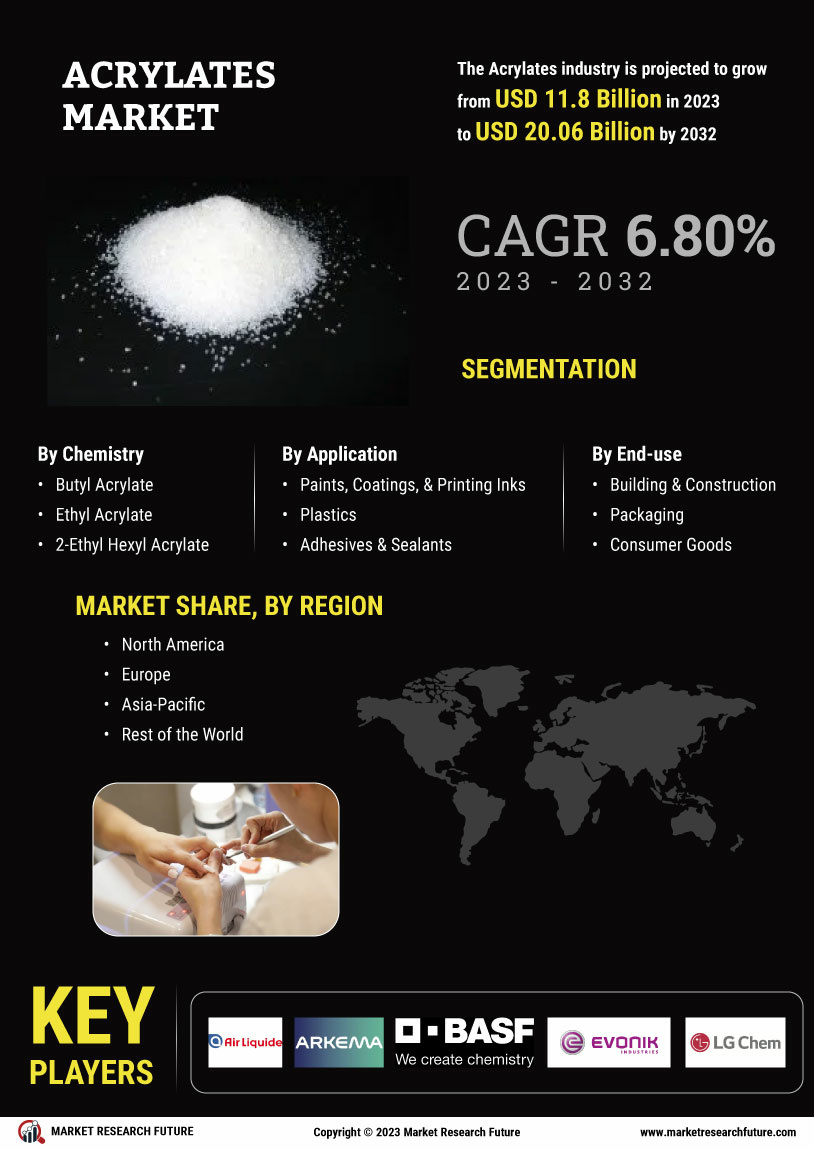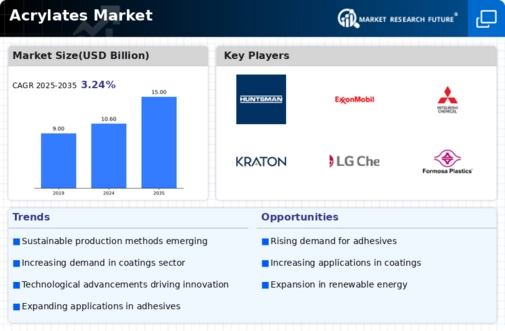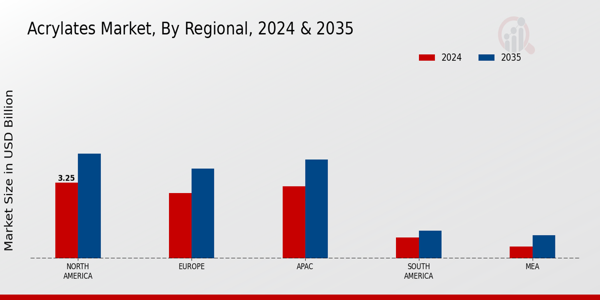Market Growth Projections
The Global Acrylates Market Industry is projected to experience substantial growth over the next decade. With an expected market value of 10.6 USD Billion in 2024 and a potential increase to 15 USD Billion by 2035, the industry is on a positive trajectory. The anticipated CAGR of 3.24% from 2025 to 2035 indicates a steady demand across various applications, including adhesives, coatings, and textiles. This growth is likely driven by technological advancements, expanding applications, and increasing consumer awareness regarding sustainable products. The market's dynamics suggest a favorable environment for stakeholders and investors looking to capitalize on the opportunities within the acrylates sector.
Expansion in Coatings and Paints
The Global Acrylates Market Industry is significantly influenced by the expansion of the coatings and paints sector. Acrylates are favored for their excellent weather resistance, adhesion, and gloss properties, making them ideal for both industrial and decorative applications. The increasing focus on eco-friendly and low-VOC formulations further propels the demand for acrylate-based coatings. As industries strive to meet stringent environmental regulations, the shift towards sustainable products is likely to enhance market growth. Projections suggest that by 2035, the market could reach 15 USD Billion, underscoring the critical role of acrylates in the evolving coatings landscape.
Increased Applications in Textiles
The Global Acrylates Market Industry is witnessing increased applications in the textiles sector, where acrylates are utilized for their excellent adhesion and flexibility properties. These materials are essential in producing water-repellent fabrics, coatings for textiles, and adhesives for bonding different materials. As the fashion and apparel industry evolves, the demand for innovative textile solutions is rising. This trend is likely to bolster the market, as acrylates offer unique benefits that align with current consumer preferences for durability and performance. The growing textile market, coupled with the versatility of acrylates, suggests a promising outlook for the industry.
Rising Demand in the Automotive Sector
The Global Acrylates Market Industry is poised for growth due to the rising demand in the automotive sector. Acrylates are utilized in various applications, including adhesives for assembling components, coatings for protective finishes, and sealants for weatherproofing. As automotive manufacturers increasingly prioritize lightweight materials to enhance fuel efficiency, acrylate-based solutions are becoming more prevalent. This trend is further supported by advancements in automotive technology, which necessitate high-performance materials. The market's growth trajectory is evident, with a projected CAGR of 3.24% from 2025 to 2035, indicating a sustained interest in acrylates within the automotive industry.
Growing Demand in Adhesives and Sealants
The Global Acrylates Market Industry experiences a robust demand surge driven by the increasing utilization of acrylates in adhesives and sealants. These materials are integral in various sectors, including construction, automotive, and packaging. The versatility of acrylates allows for enhanced bonding properties and durability, which are essential in modern applications. As the construction industry expands, particularly in emerging economies, the demand for high-performance adhesives is projected to rise. This trend is reflected in the market's anticipated growth, with the Global Acrylates Market expected to reach 10.6 USD Billion in 2024, indicating a strong trajectory for the coming years.
Technological Advancements in Production
The Global Acrylates Market Industry benefits from ongoing technological advancements in production processes. Innovations such as improved polymerization techniques and the development of bio-based acrylates are enhancing production efficiency and sustainability. These advancements not only reduce costs but also cater to the growing consumer demand for environmentally friendly products. As manufacturers adopt these new technologies, the quality and performance of acrylate products are expected to improve, further driving market growth. The integration of advanced technologies may also lead to the introduction of novel applications, thereby expanding the market's potential.













